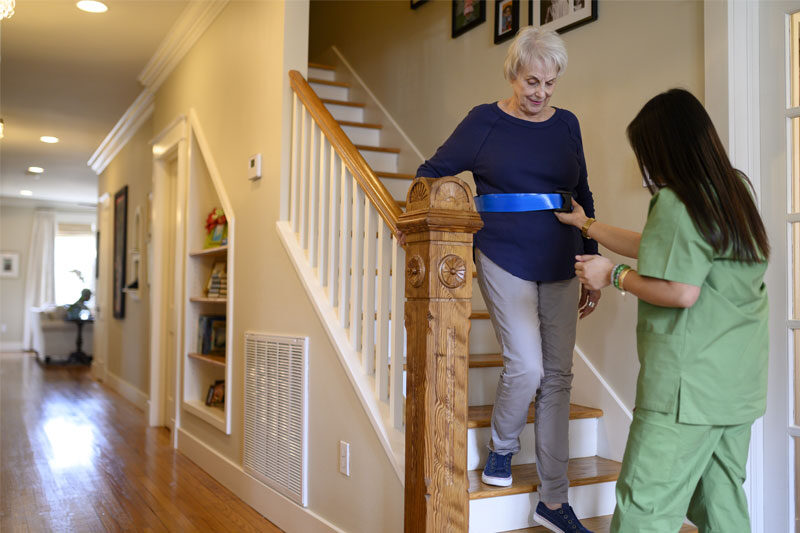In our rapidly advancing technological world, the question of can fall detection devices detect fainting is becoming increasingly relevant. With the rise of smart technology, many family caregivers are curious to know if these devices can provide the same level of protection for fainting as they do for falls. This is especially important for those caring for the elderly or individuals with health conditions that make them prone to fainting.
Fall detection devices are designed to alert caregivers or emergency services when a fall occurs, but can they also detect fainting incidents? Understanding the capabilities and limitations of these devices can help families make informed decisions about their use.

Understanding Fall Detection Technology
Fall detection devices typically use a combination of sensors, such as accelerometers and gyroscopes, to detect sudden changes in movement and orientation. These sensors are capable of distinguishing between normal activities and falls by analyzing the speed and angle of movement. However, fainting can be more challenging to detect, as it doesn’t always involve the same abrupt movements as a fall.
The Science Behind Fainting
Fainting, or syncope, is a temporary loss of consciousness due to a drop in blood flow to the brain. It can be caused by various factors, including dehydration, stress, or underlying medical conditions. Unlike falls, fainting might not always trigger the sensors in a fall detection device, as the person may simply slump to the ground without a sudden impact.
Can Fall Detection Devices Adapt to Fainting?
Some advanced fall detection devices are now being developed with the capability to detect fainting. These devices may incorporate additional sensors, such as heart rate monitors or blood pressure monitors, to identify signs of fainting before it happens. By monitoring these physiological changes, the devices can alert caregivers to potential fainting episodes.
Challenges in Detecting Fainting
Despite these advancements, detecting fainting remains a challenge. Fainting can occur without any noticeable movement, making it difficult for traditional fall detection sensors to register the event. Additionally, not all fainting events are preceded by detectable physiological changes, which can limit the effectiveness of these devices.
The Role of Smart Home Technology
Smart home technology can play a crucial role in enhancing the effectiveness of fall detection devices. By integrating fall detection with other smart home systems, such as motion sensors and cameras, caregivers can receive a more comprehensive view of the individual’s well-being. For example, a smart home system could alert caregivers if a person has been inactive for an extended period, indicating a potential fainting episode.
Benefits of Integration
By combining fall detection devices with smart home technology, caregivers can have greater peace of mind knowing they have multiple layers of protection in place. This integration can also provide valuable data to healthcare providers, allowing them to better understand patterns and potential triggers for fainting episodes.
Real-life Applications of Fall Detection Devices
In real-life scenarios, fall detection devices have proven to be invaluable tools for family caregivers. They provide an added layer of security for individuals living alone or those with medical conditions that increase their risk of falls or fainting. By promptly alerting caregivers or emergency services, these devices can help reduce the time it takes to respond to an incident, potentially preventing further injury.
Case Studies
There have been numerous case studies highlighting the effectiveness of fall detection devices in various settings. For example, in a study conducted with elderly individuals living in a retirement community, fall detection devices significantly reduced response times for medical assistance following a fall.
Future Developments in Fall Detection
The field of fall detection is continuously evolving, with researchers and developers working to improve the capabilities of these devices. Future developments may include the integration of artificial intelligence and machine learning algorithms to enhance the accuracy of fall and faint detection.
Potential Innovations
Potential innovations could involve the use of wearable technology that monitors a wider range of physiological signals, such as body temperature and oxygen levels, to provide a more comprehensive assessment of an individual’s health. These advancements could enable fall detection devices to better predict and detect fainting episodes.
Conclusion: A Promising Future
While the current capabilities of fall detection devices in detecting fainting are limited, ongoing advancements in technology offer hope for the future. As these devices continue to evolve, they hold the potential to provide even greater protection and peace of mind for family caregivers and their loved ones.

FAQ: Common Questions about Fall Detection Devices and Fainting
1. Can fall detection devices detect all types of fainting?
No, while some advanced devices may detect certain types of fainting, not all fainting episodes can be detected due to the subtlety of the event.
2. How do fall detection devices alert caregivers?
Most fall detection devices send alerts via smartphone apps or directly to emergency services when a fall or potential fainting is detected.
3. Are fall detection devices suitable for all age groups?
Yes, while they are often used for elderly individuals, fall detection devices can be beneficial for people of all ages who are at risk of falls or fainting.
This article contains affiliate links. We may earn a commission at no extra cost to you.






